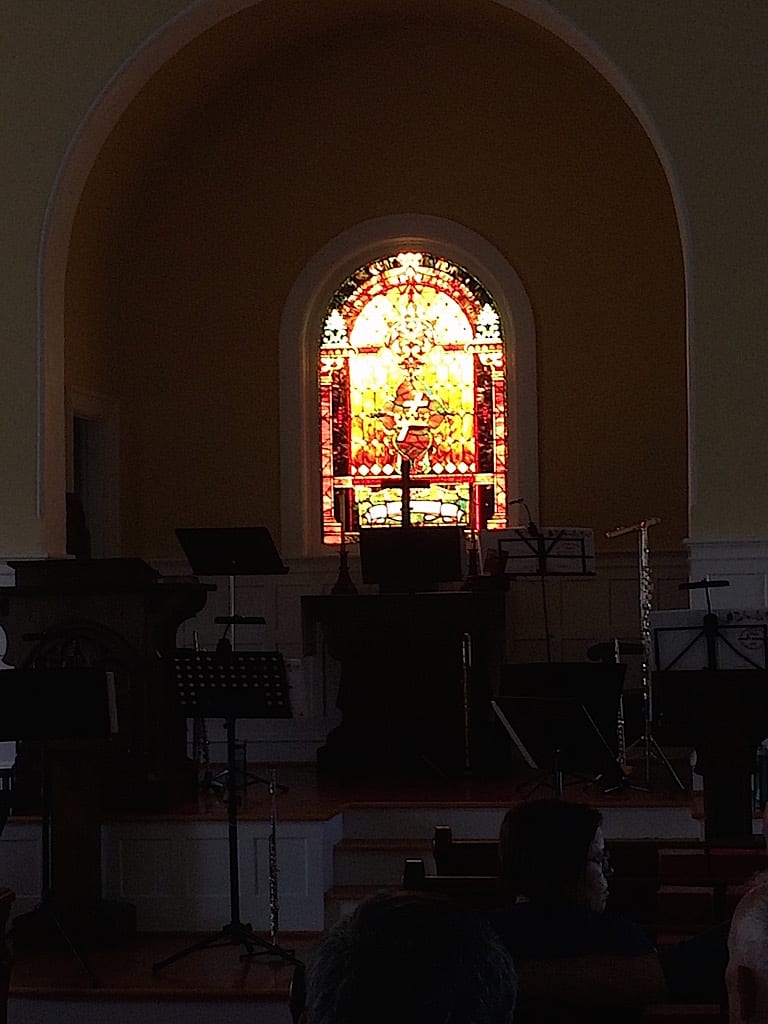 Six o’clock last Wednesday evening, the mixed choir assembled to practice for the seven o’clock prayer service at Trinity, the church constructed in the late 19th century on the original property in Crimora, Virginia. The setting sun streamed through the stained-glass window behind the altar and illuminated the flute music I’d propped on the lectern, in the absence of a music stand. To my left was the church organist, playing a portable, electronic keyboard; to my right, the choir and director.
Six o’clock last Wednesday evening, the mixed choir assembled to practice for the seven o’clock prayer service at Trinity, the church constructed in the late 19th century on the original property in Crimora, Virginia. The setting sun streamed through the stained-glass window behind the altar and illuminated the flute music I’d propped on the lectern, in the absence of a music stand. To my left was the church organist, playing a portable, electronic keyboard; to my right, the choir and director.
For attendees, the acoustics were wonderful; the sound reverberated around that old church. But it was almost impossible for us to hear one another and stay together. By the time the choir heard the keyboard sound from across the room, they were behind.
“Don’t wait until you hear the accompaniment,” the director said. “Anticipate, like you’re leaning into the music and watch me.” I listened for the keyboard with my left ear, watched the director’s downbeats, listened to the choir with my right ear, and did my best put it together in my head and keep pace.
With the exception of a simple duet with another flutist several months ago, I hadn’t played in public for nearly forty years and hadn’t touched my flute in over three decades when I picked it up last year. Slowly but surely, fingerings, breath control, and an embouchure returned, though high E was still a nemesis. And Wednesday evening’s capstone piece “In This Fellowship for Faith” had many high E’s.
It was hot, humid, and breezeless in the sanctuary when the choir rose to sing at the end of the prayer service. The sun had set and a storm brewed to the west. With no lighting in the old church, other than natural and one over the organ, we could barely see our music. I was worried about compensating for the heat—which makes metal instruments like flutes sound sharp—missing entrances, making mistakes, or squawking the high E. What would the acoustic mix sound like now, I wondered, and what other adjustments would I need to make?
When teaching students in the classroom, I was well aware of the infinite variables involved. Since people have a lot going on in their minds and listen selectively, teachers have little influence over what their students might be thinking. Also, lighting and acoustics can change people’s ability to see and hear.
Nature and nurture.
It is my nature to be self-centered, as if I’m playing solo. But teachers and musicians know about different acoustics, that it’s not so much what we perceive but what others do that matters. People of faith become particularly other-centered, as David Brooks’ noted in his book The Second Mountain, which I blogged about here.
All went well last Wednesday night, so the attendees told us. Though the performance was not mistake-free on my part, we made a joyful noise unto the Lord in the old church.
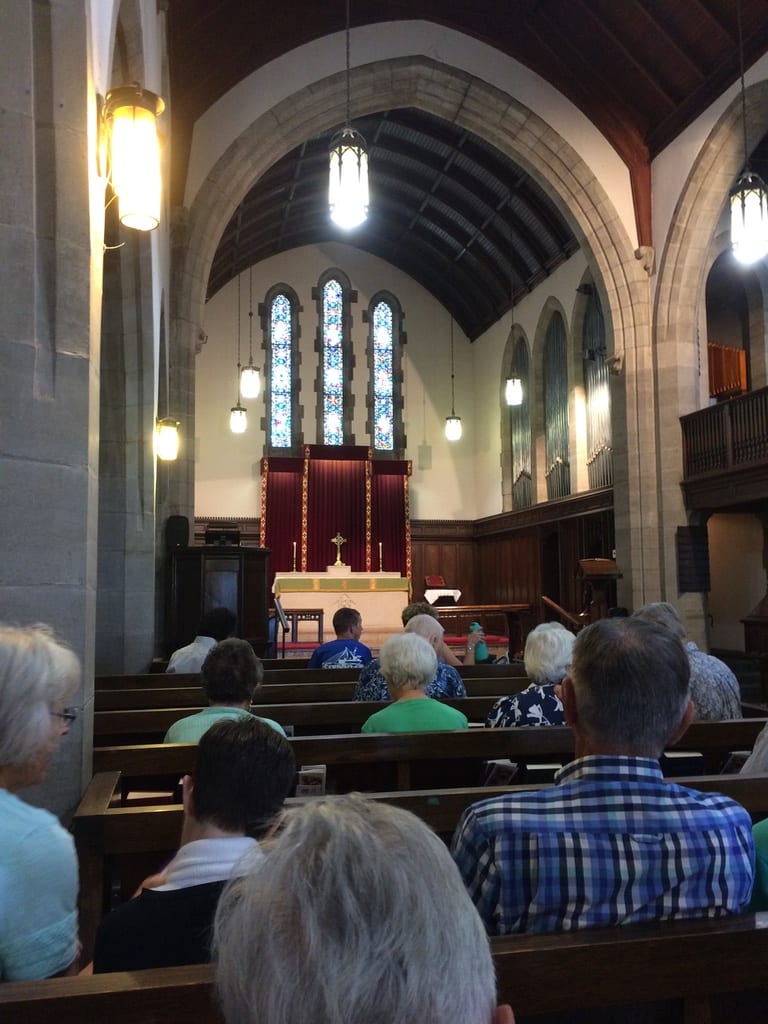 The choir experienced different acoustics again yesterday afternoon, singing “The Benediction” in the loft at Bethany in Waynesboro. The church pictured here was built 95 years ago and sold this summer to the Anglican church, because we’ve outgrown the building and they are planting a new church.
The choir experienced different acoustics again yesterday afternoon, singing “The Benediction” in the loft at Bethany in Waynesboro. The church pictured here was built 95 years ago and sold this summer to the Anglican church, because we’ve outgrown the building and they are planting a new church.
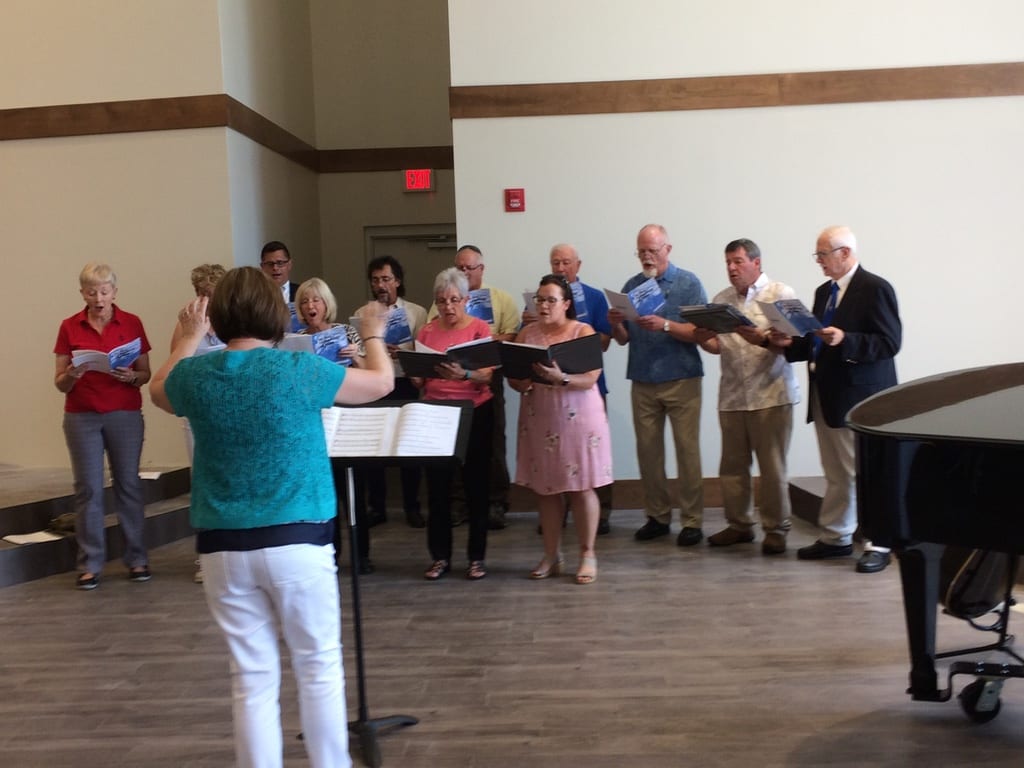 After the choir sang, “Amen,” we all said, “He is risen, He is risen, indeed, Alleluia,” for the last time in the old Bethany sanctuary. Then we drove to the new building in Fishersville near Staunton. There the choir sang “In This Fellowship of Faith” in the new, nearly-completed sanctuary, again with piano and flute accompaniment.
After the choir sang, “Amen,” we all said, “He is risen, He is risen, indeed, Alleluia,” for the last time in the old Bethany sanctuary. Then we drove to the new building in Fishersville near Staunton. There the choir sang “In This Fellowship of Faith” in the new, nearly-completed sanctuary, again with piano and flute accompaniment.
I’m sure people had a lot going on in their minds yesterday—I know I did when playing and otherwise. But in each location, different acoustics gave us an opportunity to make joyful noises unto the Lord.

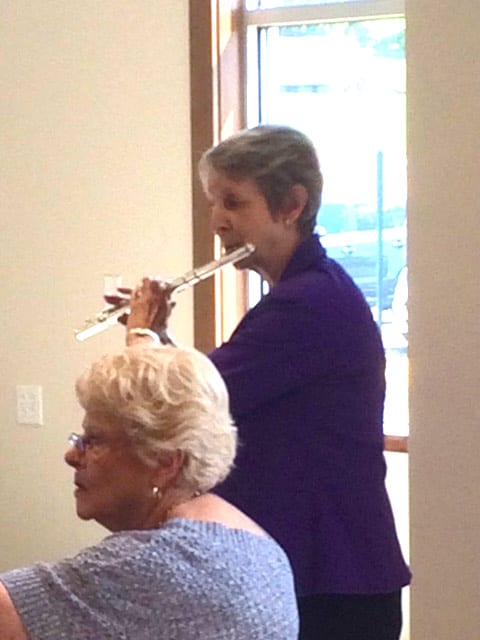

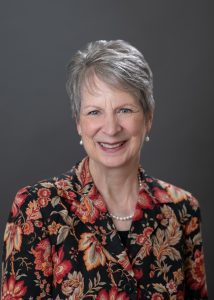
Carole, thanks for sharing the details about making joyful music to the Lord. It reminds me of singing in the church choir years ago.
Do you ever think about joining a choir again? Our voices might not be what they used to be, but no matter.
Perhaps I might consider it. I still enjoy singing in church on Sunday.
Great post
Thank you! -C.D.
Welcome